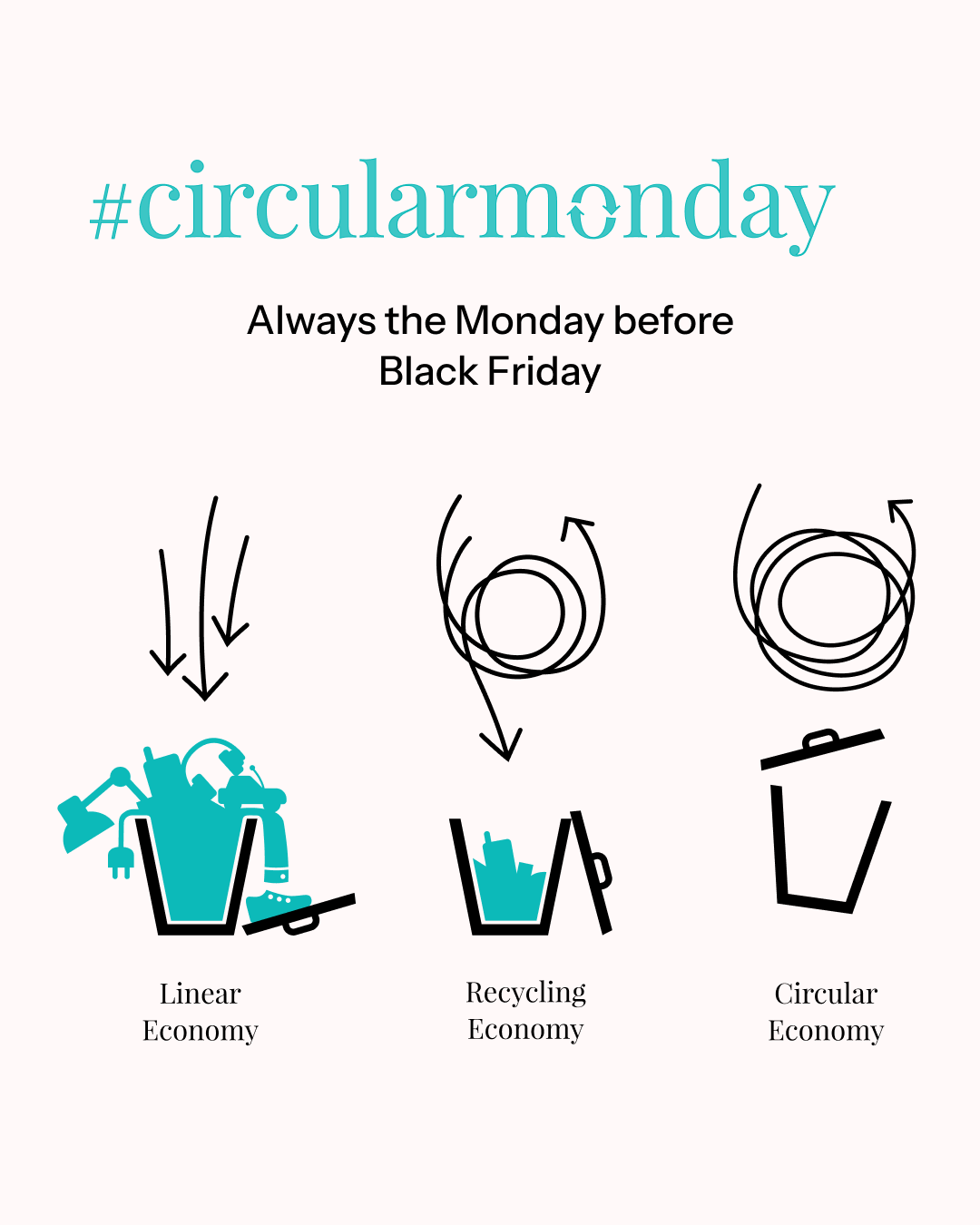Circular Monday Is Back - And How You Can Join
Circular Monday was created because something needed to change. As Black Friday grew into a global symbol of overconsumption, spreading far beyond the US and dominating every corner of digital life, it became clear how deeply the linear “take–make–waste” model had shaped our behaviour. In response, a small group in Sweden launched an alternative in 2017: a day dedicated not to buying more, but to using what we already have.
What began as a counter-movement has grown into a global campaign. Today, Circular Monday is active in over 40 countries, supported by more than 1,400 businesses, organisations and community leaders, and in 2024 it reached 40 million people worldwide. This year marks its ninth edition, and with it comes the campaign’s next evolution: Circular Week 2025, running 17–24 November.
Why Circularity Is Not Optional
If we want to understand why Circular Monday exists, we need only look at the latest Circularity Gap Report:
The global economy is just 7.2% circular, meaning more than 92% of all materials extracted from the Earth are used once and never return to the system.
The overall linearity drives up to 70% of global greenhouse-gas emissions and over 90% of biodiversity loss, mainly through extraction and production.
Just 0.3% of materials used by the global textile industry come from recycled sources, with almost no textile-to-textile recycling.
Circular strategies across the economy could reduce material use by 30% and emissions by 39%
High-income consumption levels are a major driver. If everyone lived like the average person in Europe or the US, humanity would need the resources of three to nine planets.
Against this backdrop, Black Friday is more than a shopping moment; it is a symptom of a system that has largely overshot our planetary boundaries. Circular Monday exists to remind us that there is another way to live and consume.
Why Fashion Is at the Heart of the Circular Transition
Fashion is one of the most resource-intensive industries. It depends on constant extraction, cotton, oil, chemicals, dyes, land, water, only to produce garments that are often worn a handful of times before being discarded.
A circular fashion system turns this around through:
Reuse – second-hand, vintage, swapping
Repair and care – fixing what we own
Rental and sharing models
Refurbishing and upcycling
Designing for durability, not disposability
Every time a garment stays in use, it avoids the need to produce a new one, saving emissions, water, energy and raw materials. This is the spirit of Circular Monday.
How You Can Join Circular Monday 2025
You don’t need to be a business to take part. The movement is built on simple actions that anyone can do.
1. Do something circular instead of buying something new
Choose one of these on 24 November:
Repair something you already own
Buy second-hand or vintage
Swap clothes with a friend
Rent an item instead of purchasing it
Upcycle or refresh something from your wardrobe
Support a local repair shop or tailor
2. Spread the word
This is how the movement grows. On 24 November:
Share a circular action or tip
Tell the story of a business you want to spotlight
Post with the hashtag #CircularMonday
Tag the campaign to help amplify the message
3. Join the campaign officially (for businesses and organisations)
Become a Buddy, Volunteer or Sponsor at: www.circularmonday.com/joinus
This gives you access to:
A global community
Free communication materials
Visibility in international press and campaign channels
A place in the growing catalogue of circular solutions
4. Take part in Circular Week 2025
From 17–24 November, the new Circular Week will gather stories, events, workshops and examples from around the world, starting with a COP30 broadcast linking circularity directly to climate action.
A Movement Growing Because It’s Needed
Circular Monday didn’t emerge from marketing strategy, it emerged from necessity. It grew because people everywhere recognised themselves in the message: We don’t need more things. We need longer lives for the things we already have.
And when millions of people act on that idea on the same day, it becomes more than behaviour change, it becomes cultural change.




